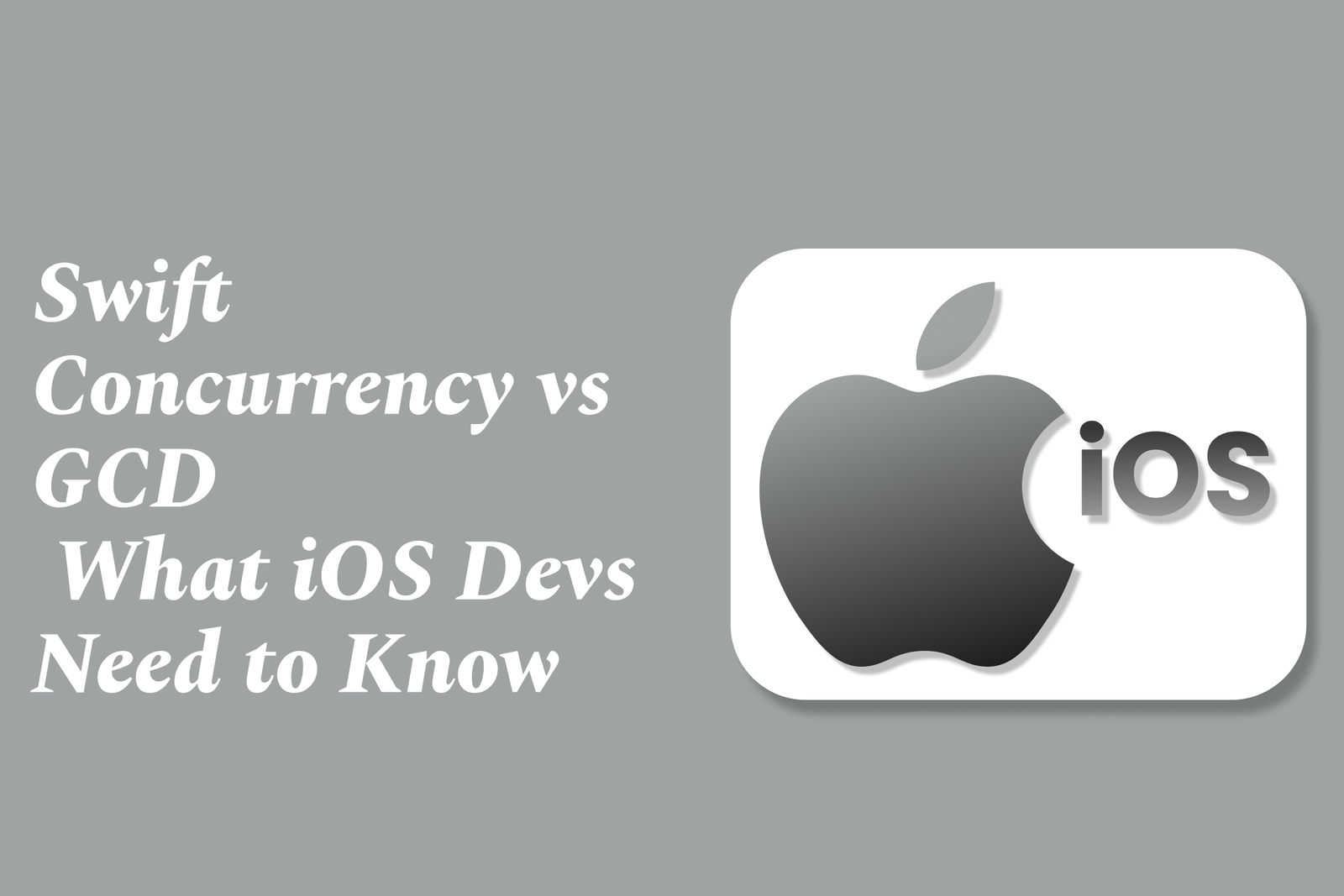Swift Concurrency vs GCD: What iOS Devs Need to Know
Swift Concurrency modernizes async programming with `async/await`, structured tasks, and actors for safer, clearer code in iOS 15+. GCD remains powerful for low-level thread management and legacy support. iOS devs should understand both to choose the best fit for their projects.
Swift Concurrency vs GCD: What iOS Devs Need to Know
1 ) Introduction to Swift Concurrency and GCD
Swift Concurrency, introduced in Swift 5.5, is a modern concurrency model aiming to simplify asynchronous and parallel programming by making asynchronous code resemble synchronous and sequential code. Grand Central Dispatch (GCD), a lower level API available in earlier Swift versions, provides powerful tools for managing serial and concurrent queues and running tasks in the background on multicore CPUs.
2 ) Key Concepts and Differences
Readability and Maintainability: Swift Concurrency uses `async/await` syntax to improve code clarity, making asynchronous operations appear linear and easier to follow compared to the callback based or closure based style often used with GCD.
Concurrency Model: Swift Concurrency introduces advanced features such as actors, task groups, and structured concurrency, which better handle common concurrency problems like data races and cancellation. GCD operates with serial and concurrent queues and is more manual in managing execution order and thread safety.
Execution and Scheduling: GCD maps tasks to system managed thread pools and lets developers specify Quality of Service (QoS) classes. Swift Concurrency similarly utilizes cooperative threading but adds a layer of abstraction that allows more fine grained control and safety.
3 ) Performance and Efficiency Considerations
Swift Concurrency benefits from optimizations in the Swift runtime and leverages the CPU more efficiently through structured task management.
GCD is mature and highly performant but requires careful management of resources and synchronization to prevent issues such as thread contention or deadlocks.
Developers have observed that Swift Concurrency's `TaskGroup` can express parallelism effectively but may see limitations in thread utilization on simulators compared to physical devices.
4 ) Best Practices and Use Cases
Use Swift Concurrency when aiming for safer, more readable asynchronous code with built in cancellation and error propagation, especially for new projects targeting iOS 15 and later.
Prefer GCD for backward compatibility or when fine tuned control over dispatch queues and execution contexts is required, such as for legacy code or specific performance optimizations.
Combining both can be practical, where Swift Concurrency handles high level asynchronous work and GCD manages lower level task dispatching.
5 ) Challenges and Developer Insights
Swift Concurrency is evolving, and developers need to understand its core constructs like `async/await` before adopting advanced features such as actors and continuations.
There can be unexpected behaviors in thread distribution (e.g., on simulators), so profiling and testing on actual devices are important.
GCD requires understanding of concurrent programming concepts like queues, QoS, and synchronization primitives to avoid subtle bugs.
6 ) Conclusion
Swift Concurrency marks a significant step forward in asynchronous programming on iOS by improving code clarity, safety, and structured parallelism. However, Grand Central Dispatch remains a powerful, flexible tool, especially for legacy support and finer control. iOS developers should familiarize themselves with both paradigms to make informed decisions based on project requirements, deployment targets, and performance needs.
https://justacademy.in/news-detail/how-react-native-is-simplifying-mobile-app-maintenance
https://justacademy.in/news-detail/building-pwas-with-flutter-in-2025
https://justacademy.in/news-detail/flutter-for-startups:-quick-mvp-building-guide
https://justacademy.in/news-detail/must-have-flutter-tools-for-designers
https://justacademy.in/news-detail/how-android-is-improving-privacy-in-2025
Related Posts
Java supports GDPR and data privacy by enabling secure data handling through encryption, controlled access, and precise data management. It allows developers to minimize PII exposure, ensure data confidentiality, and design workflows that comply with data protection regulations effectively.
Java code quality tools have evolved to include advanced static analysis, integrated security checks, and AI-powered code reviews. These updates help developers detect bugs, enforce coding standards, and enhance security, streamlining the development process and improving overall code reliability.
Java remains a cornerstone in big tech companies, evolving with modern features like records, pattern matching, and virtual threads. Its robust ecosystem, enhanced performance, and growing AI integrations keep it vital for both legacy systems and innovative new projects.
Java and CI/CD pipeline optimizations streamline Java application development by automating builds, tests, and deployments. They improve efficiency through parallelization, caching, and secure secrets management, enabling faster feedback loops and more reliable, scalable software delivery.
Java supports modern cryptography standards through its flexible Java Cryptography Architecture (JCA), enabling integration of advanced algorithms like AES, EdDSA, and post-quantum tools. Libraries like Bouncy Castle offer FIPS-certified, hardware-accelerated implementations for secure development.
Java 23 enhances record patterns by enabling concise, direct destructuring of record components within pattern matching, simplifying type checks and data extraction. This improvement boosts code readability and expressiveness by reducing boilerplate in handling immutable data classes.
Java remains a top choice for mobile app backends, powering scalable, secure, and high-performance server-side solutions. Latest trends include cloud-native microservices, reactive programming, and enhanced JVM optimizations, enabling efficient, flexible, and robust mobile backend development.
Java SE 24 and LTS Java SE 21 offer enhanced features and performance, while Apache Spark 4.0.0 introduces Scala 2.13 support and advanced ML and SQL capabilities. Together, they empower developers to build scalable, high-performance data applications with modern tools.
JUnit 5 modernizes Java testing with a modular architecture, improved assertions, and seamless Java 8+ support. Beyond JUnit, tools like Mockito and AssertJ enhance mocking and assertions, creating a powerful, flexible ecosystem for writing clean, efficient Java unit tests.
Java plays a pivotal role in cloud automation tools by providing a robust, platform-independent language used to build scalable automation frameworks like Jenkins and Selenium, enabling efficient CI/CD pipelines, testing, and orchestration across diverse cloud environments.










